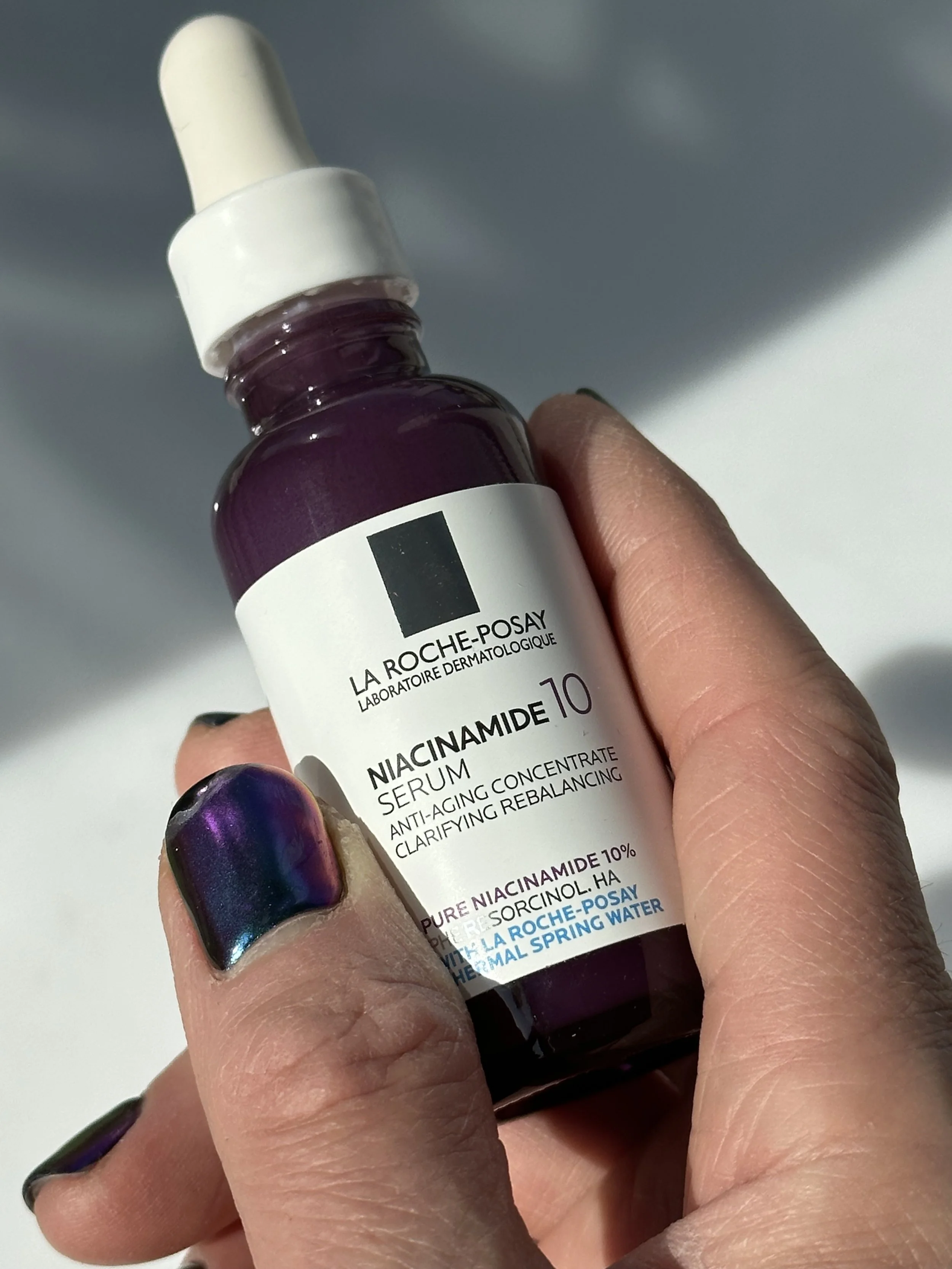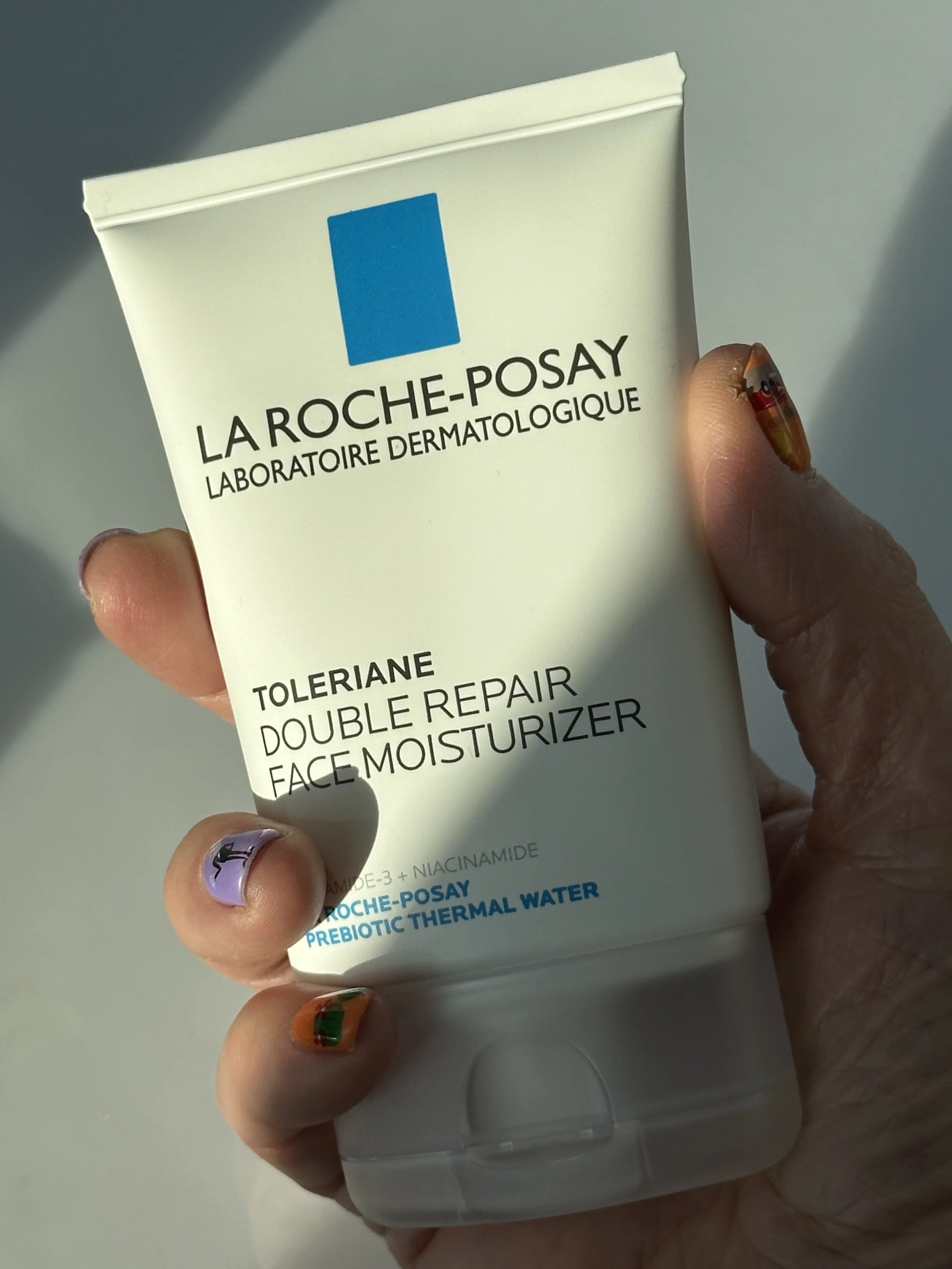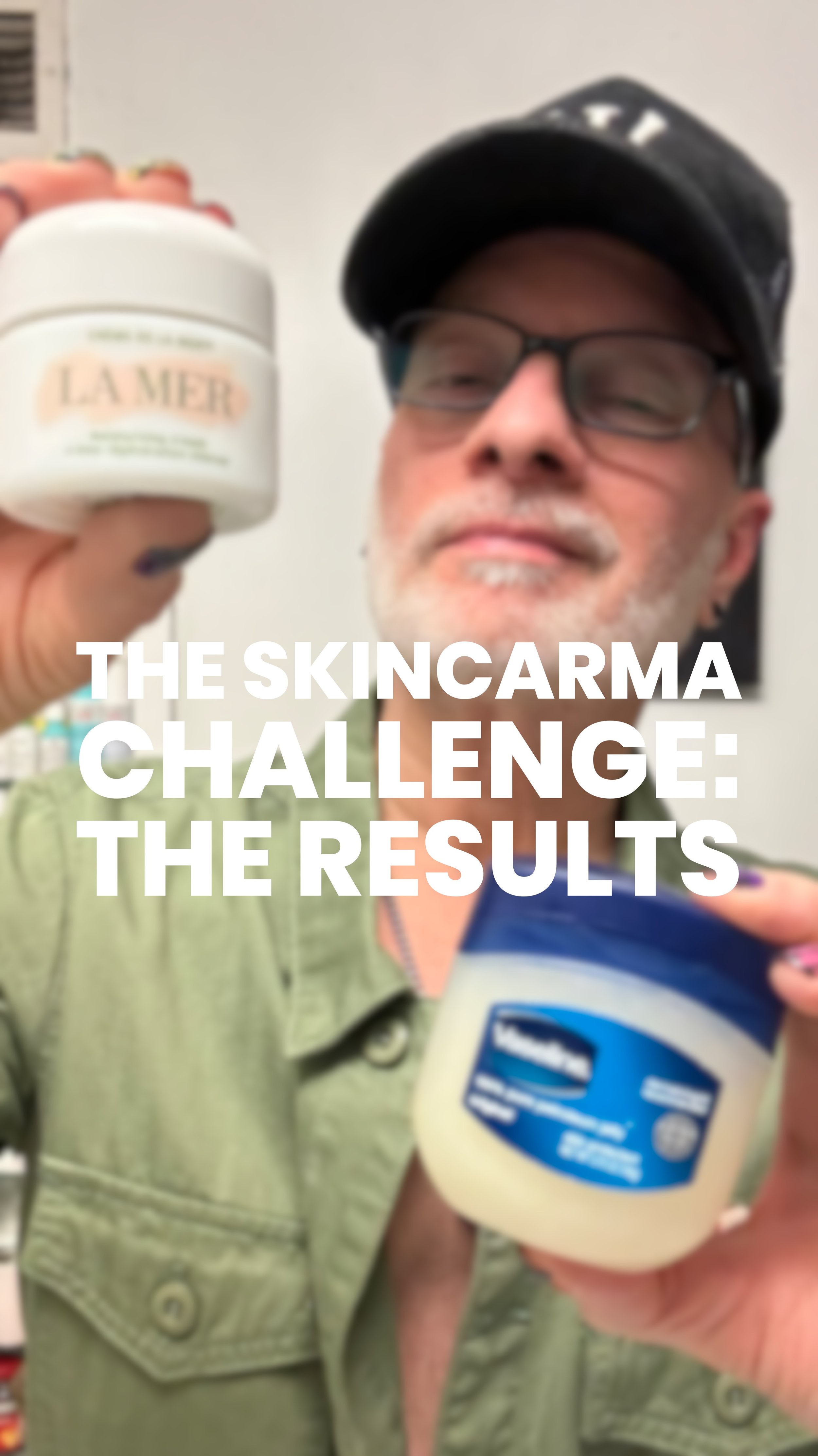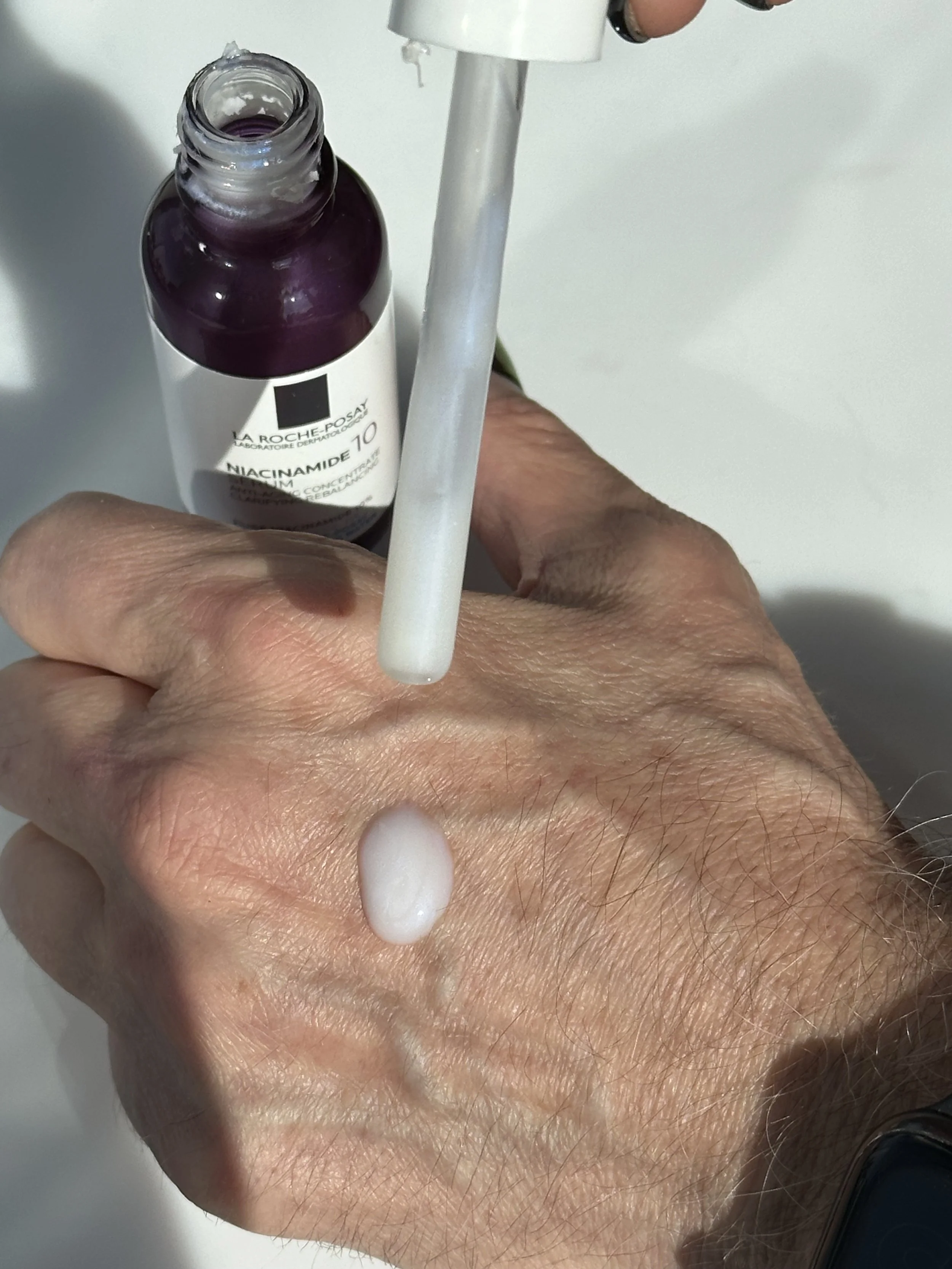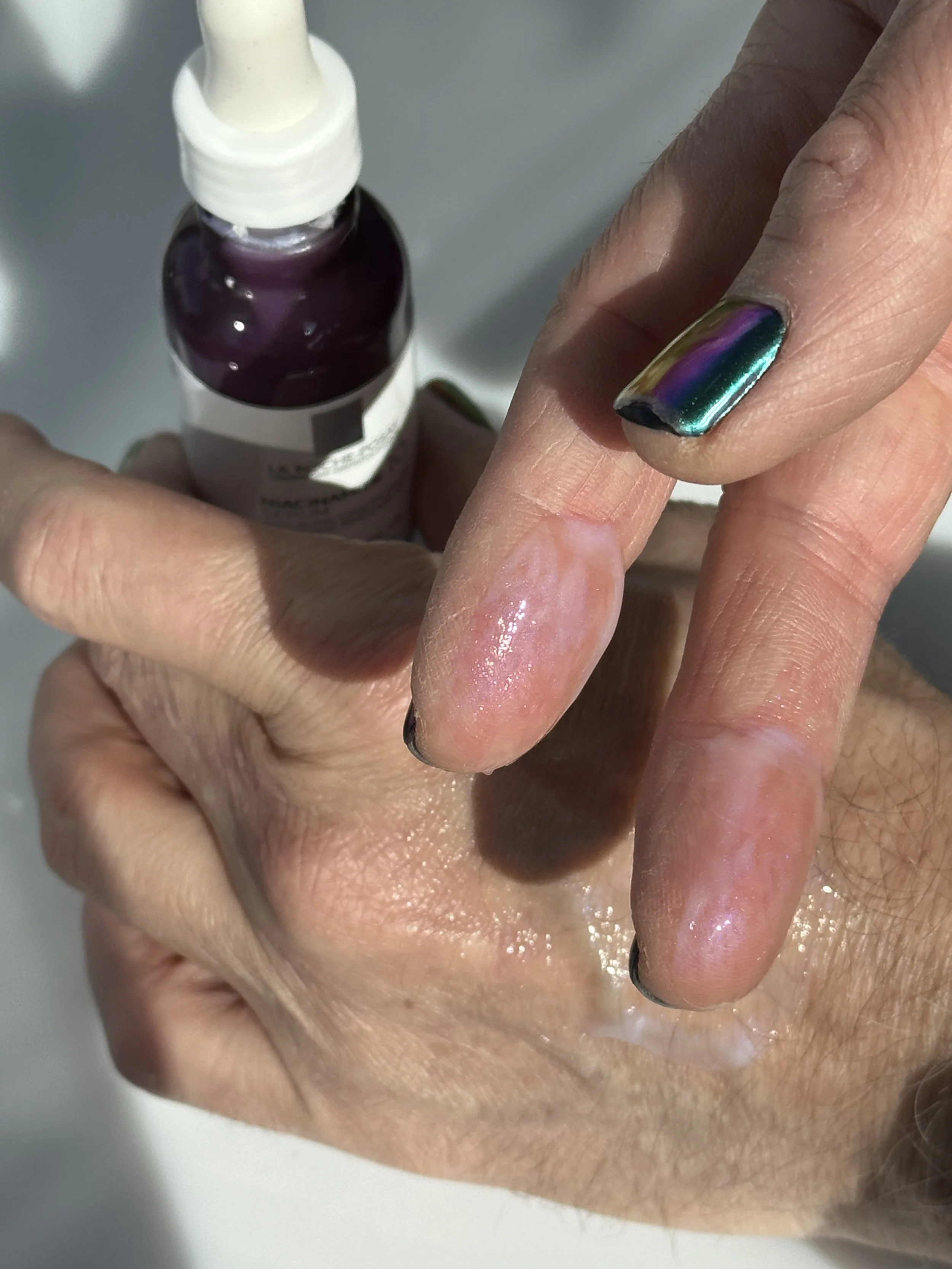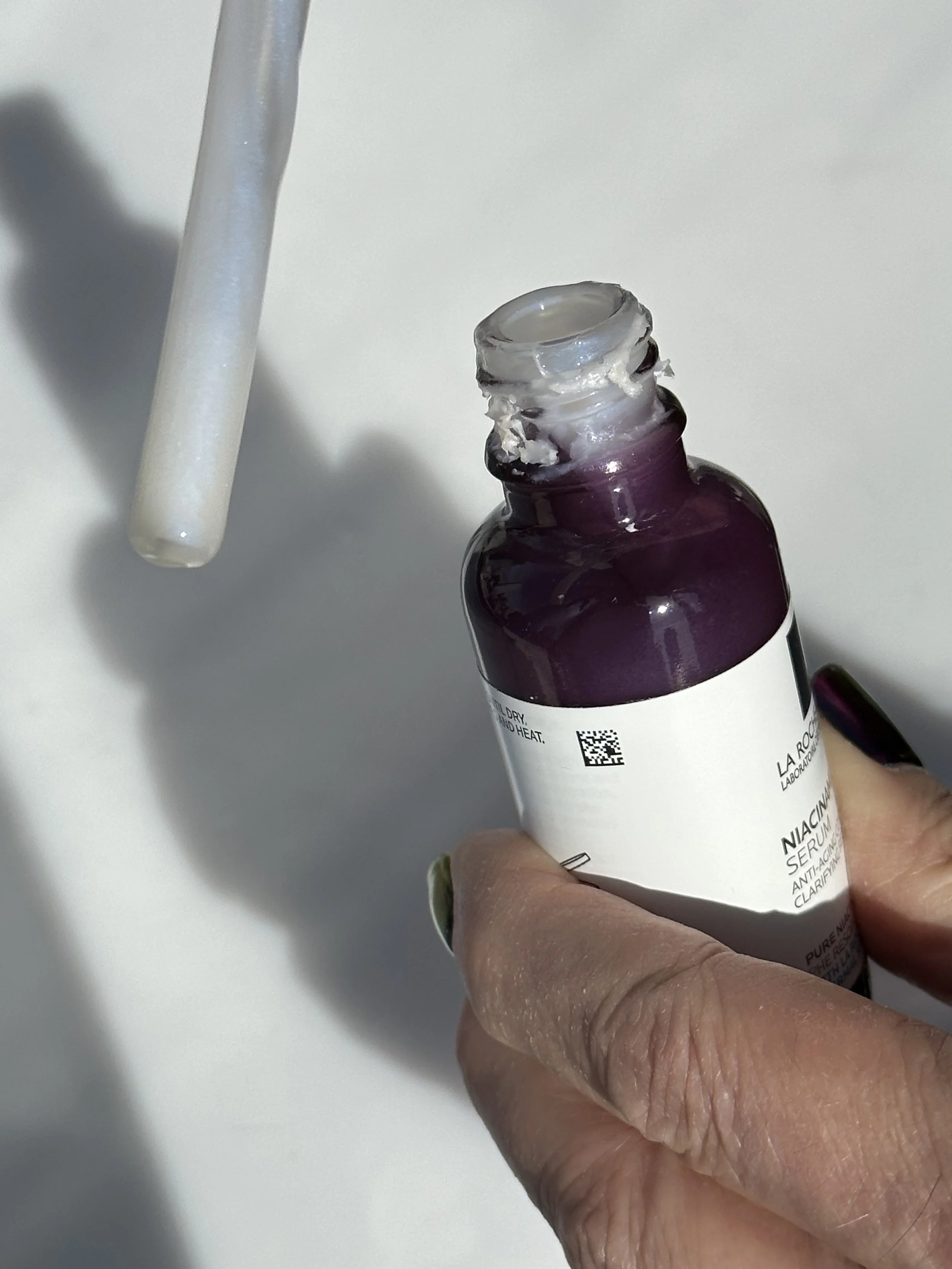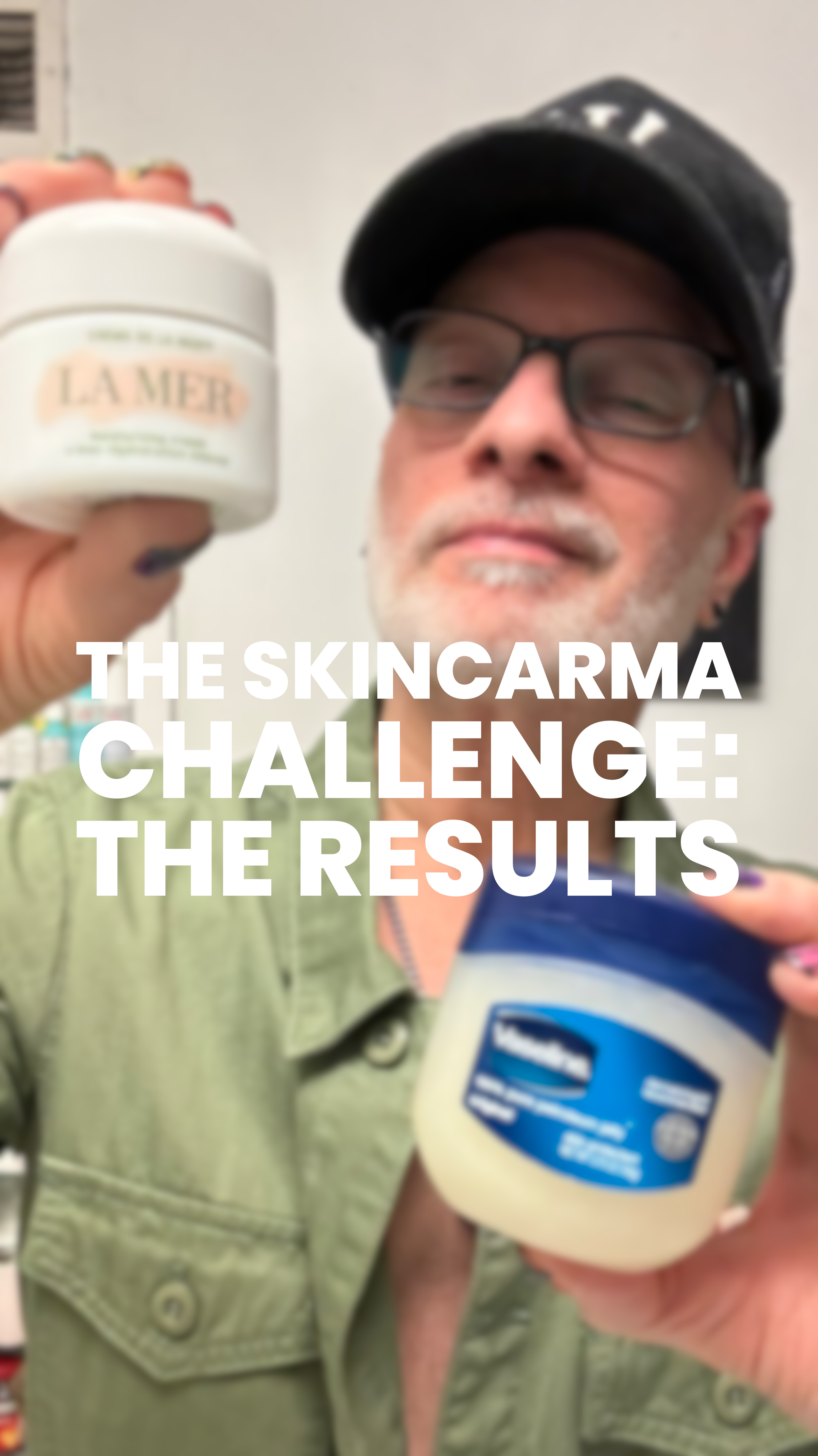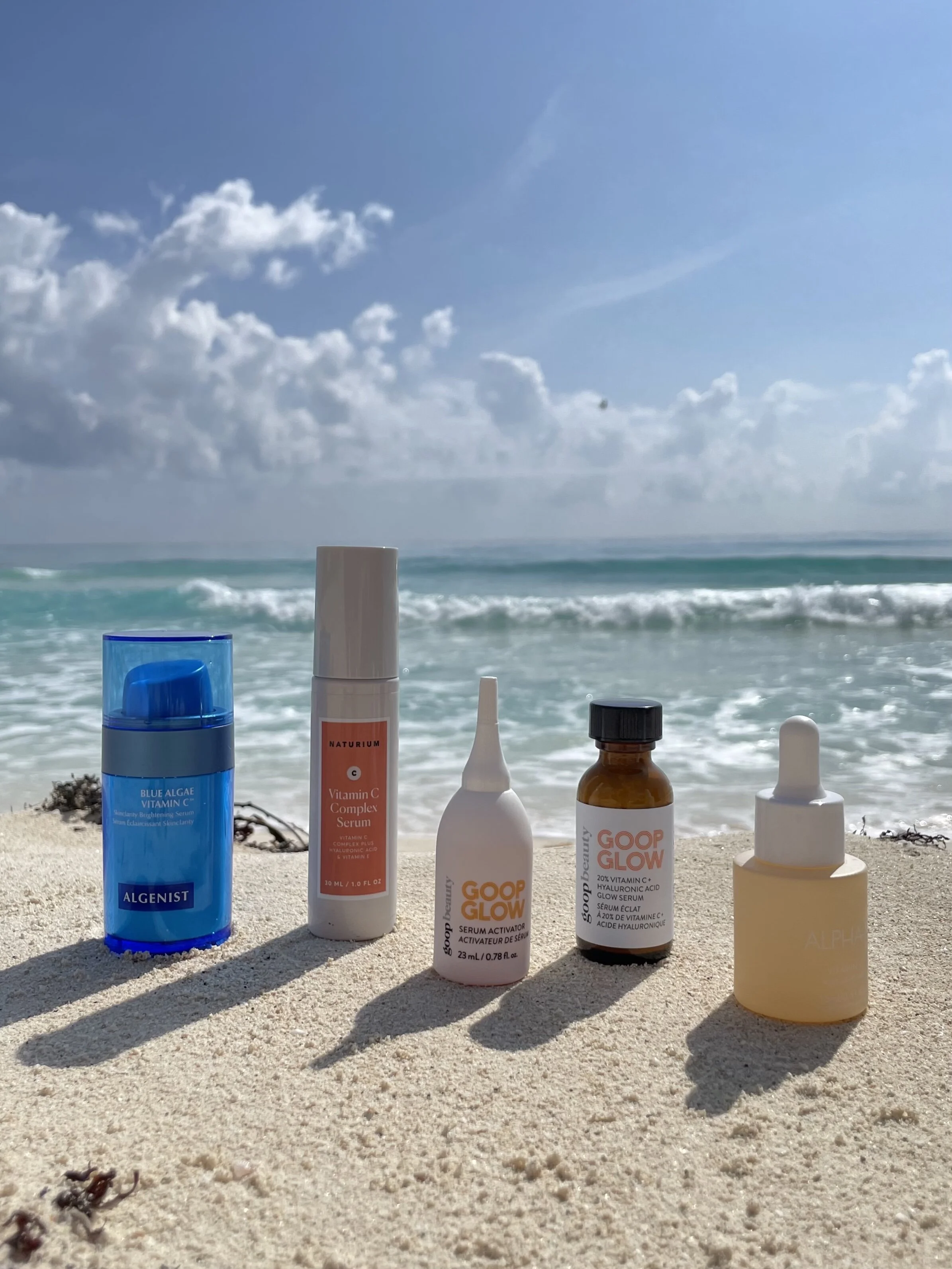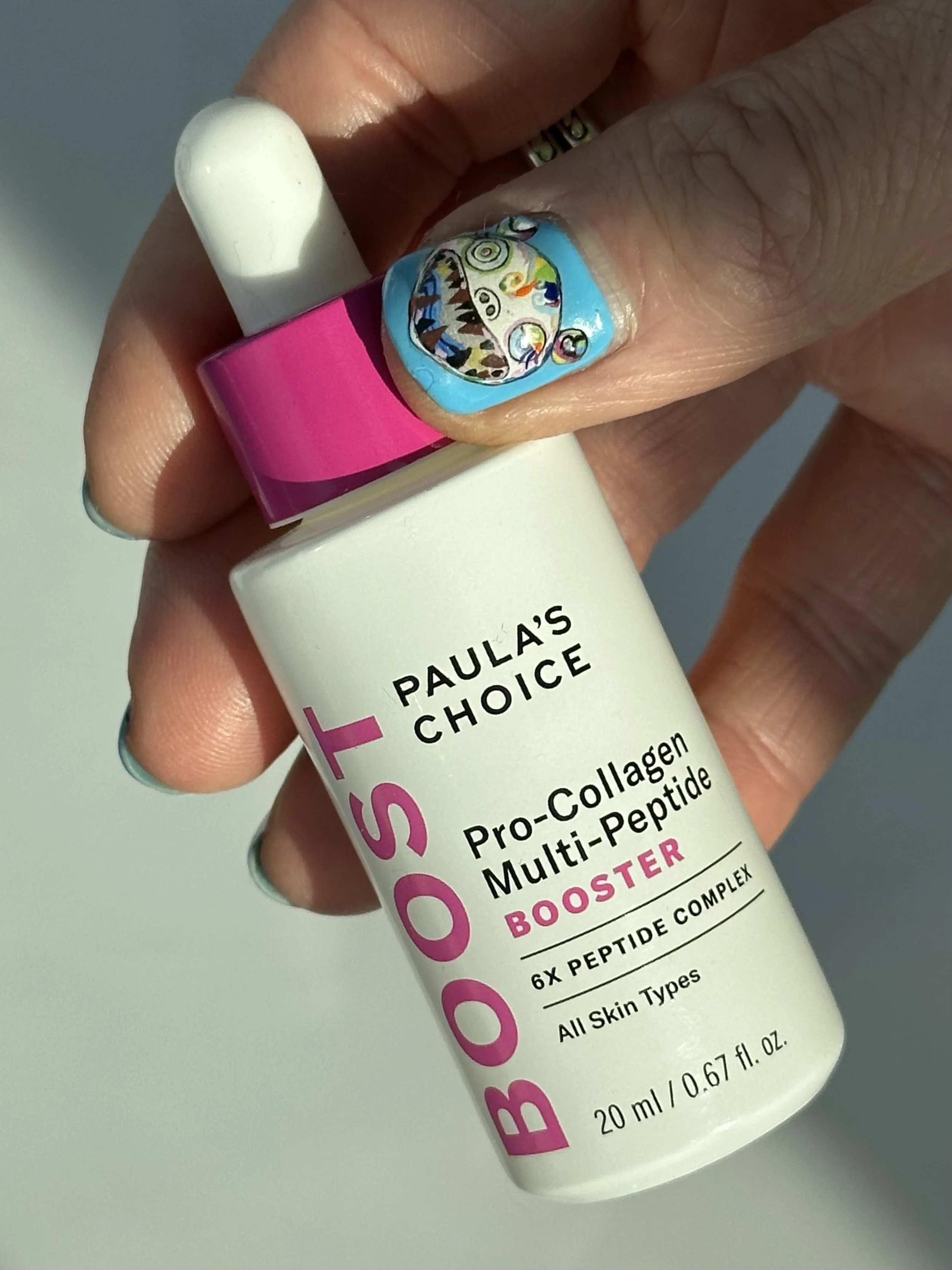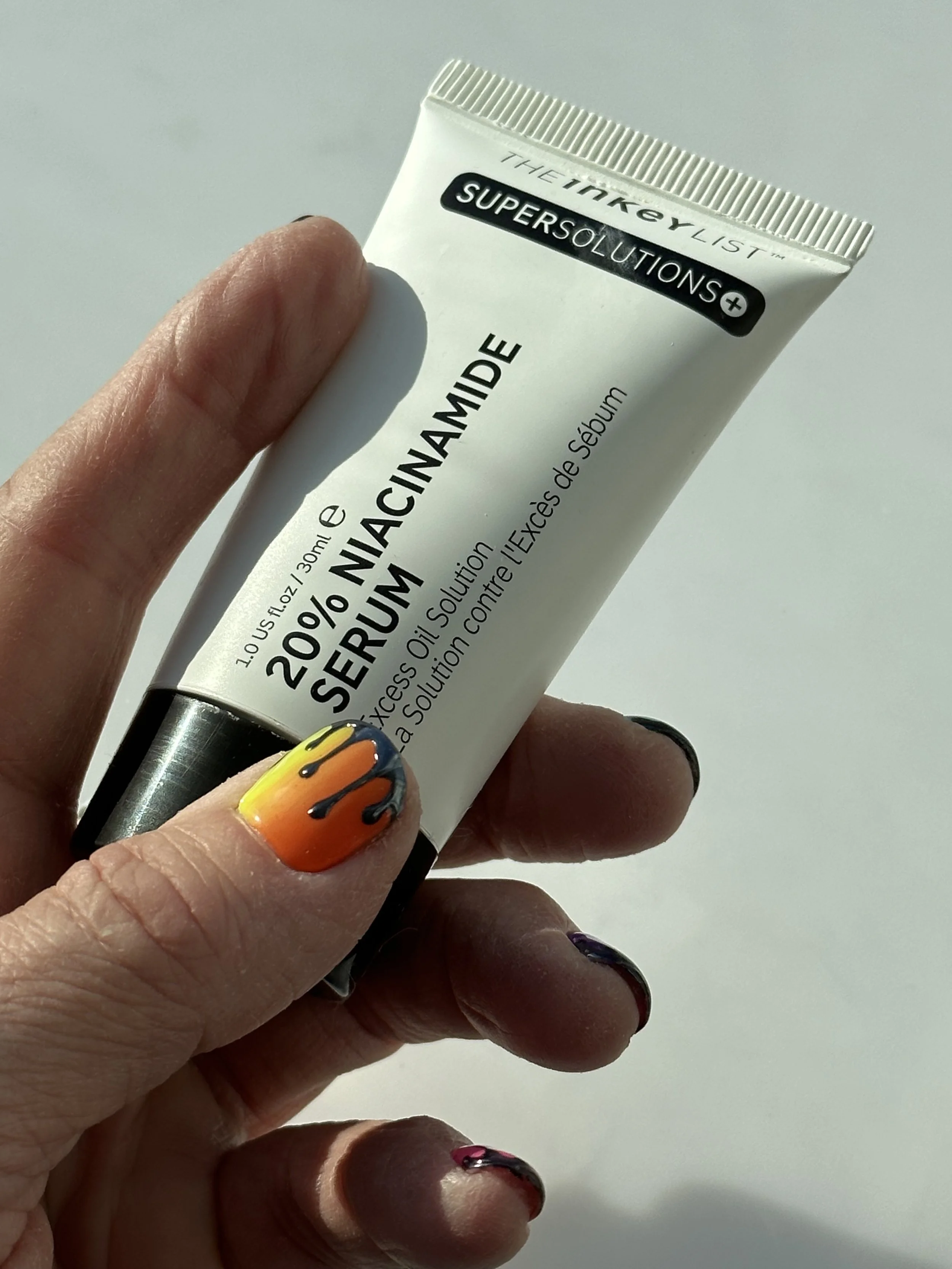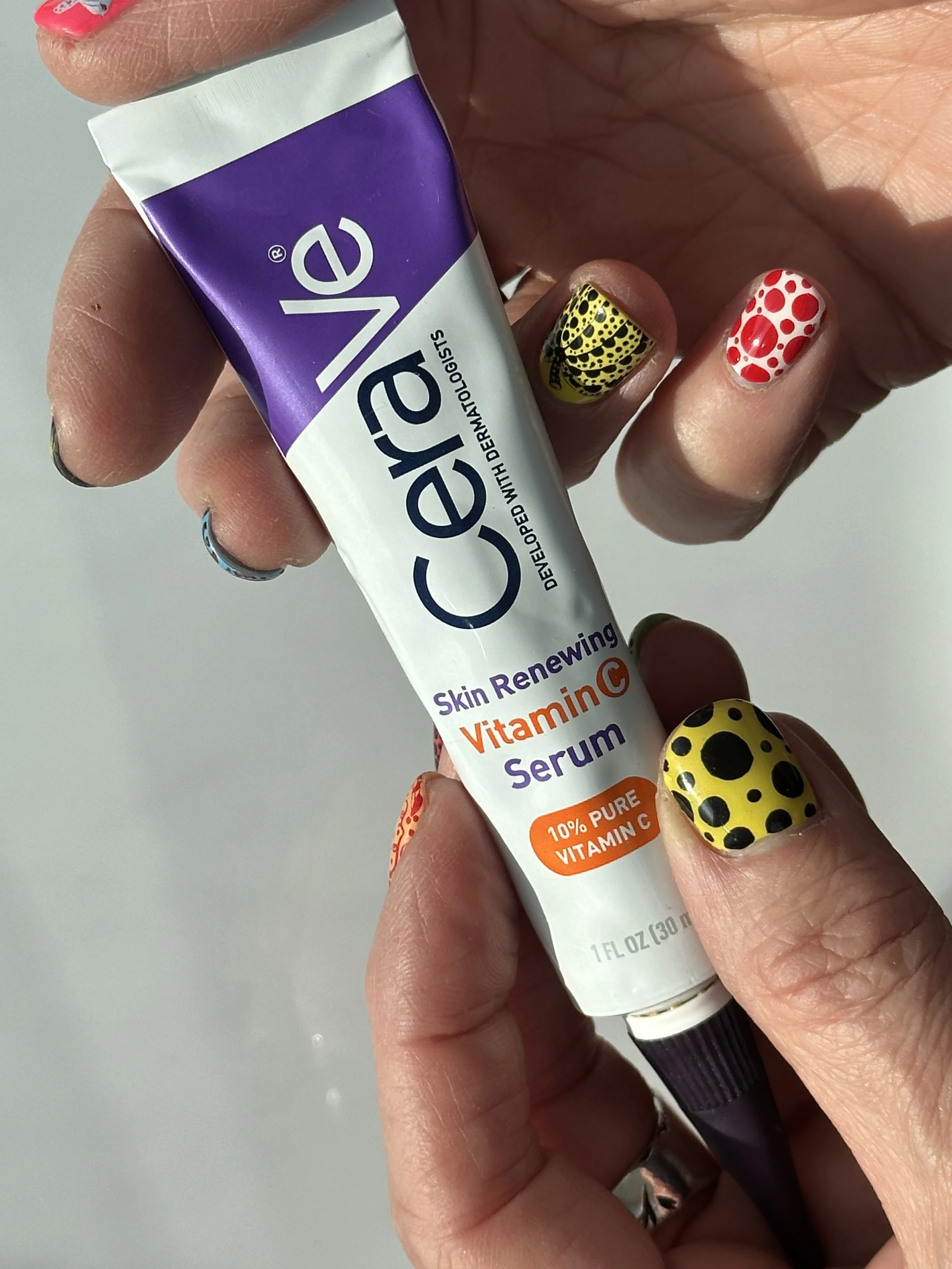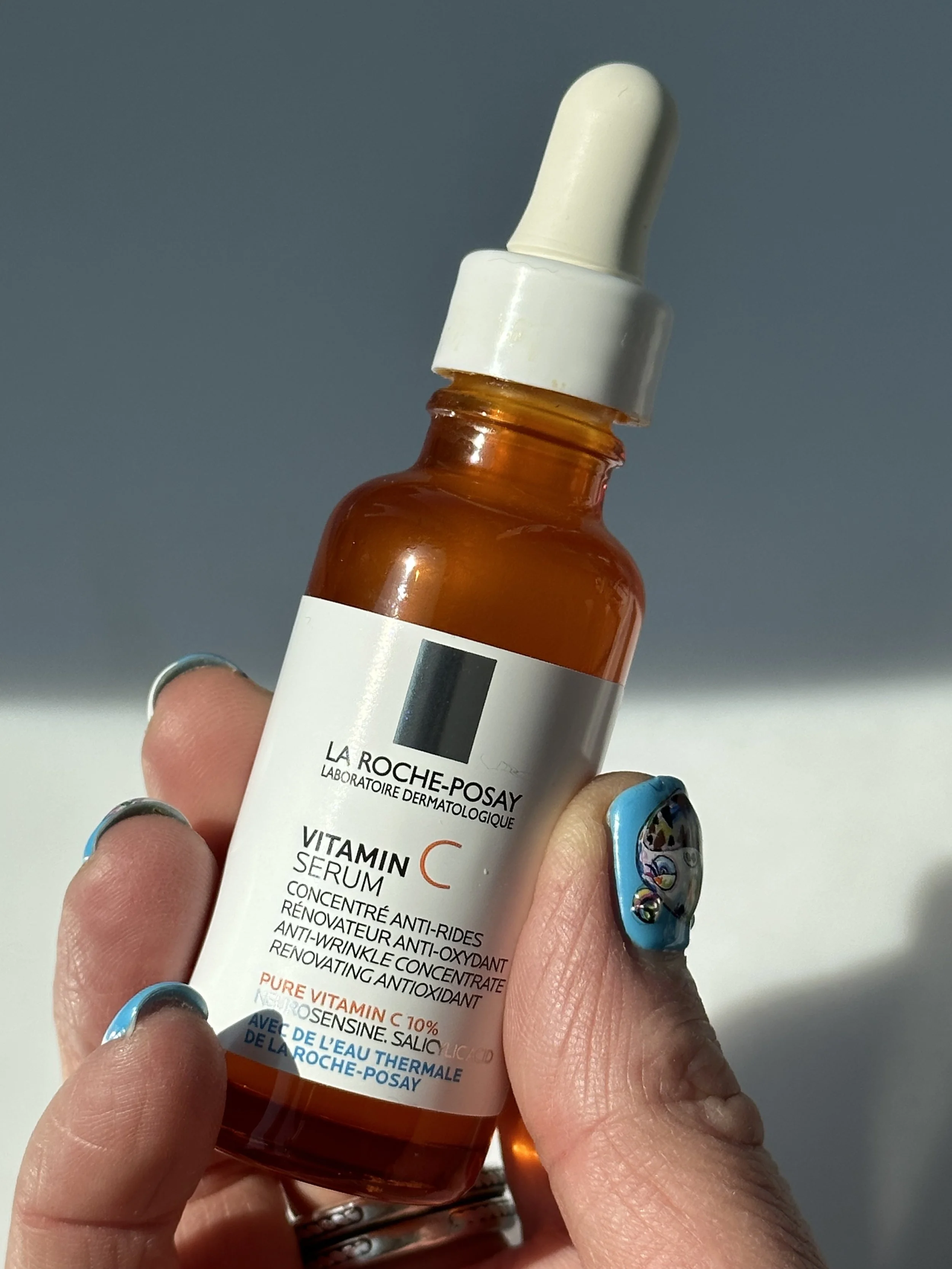PRODUCT REVIEW: LA ROCHE-POSAY 10% PURE NIACINAMIDE FACE SERUM - What Is Niacinamide? What Does Niacinamide Do to the Skin? Can I Use Niacinamide and Vitamin C at the Same Time?
LA ROCHE-POSAY | 10% PURE NIACINAMIDE FACE SERUM
There are a select few ingredients that I consider mandatory in any truly pro-skin health skincare routine.
Among the best ingredients in skincare with legitimate longterm benefits for your skin health are sun filters like Zinc Oxide, BHAs like Salicylic Acid, antioxidant botanicals like Green Tea Leaf Extract – and a whole slew of emollient plant oils and vitamins.
Yes, vitamins. They’re indispensable.
Your mom told you to take your vitamins when you were a kid, right? Funny how opposed my brother and I were to taking our daily vitamin tablets. We used to pretend to swallow them, then stash our Flintstones chewables in our pockets or palms of our hands and dispose of them surreptitiously. Yikes!
But seriously, why are vitamins good for your skin? Well, vitamins are rich in antioxidants, which are essential to the health of our bodies and notably, our skin. The most important vitamins used in skincare is the trifecta of Vitamin C, Vitamin A, or Retinol, and Vitamin B3 – aka Niacinamide.
And I make a habit of using all three every day! I attribute my superb skin heath to my use of a dedicated Vitamin C serum and Niacinamide serum twice daily and a Retinol face cream or face serum with Retinol at night. Along with sunscreen, of course.
And a Niacinamide serum is everything when it comes to your skin health.
PRODUCT REVIEW: LA ROCHE-POSAY TOLERIANE DOUBLE REPAIR FACE MOISTURIZER
I love trying new Niacinamide serums. Among my recent finds is the new Sunday Riley B3 Nice 10% Niacinamide Serum – a unique antioxidant serum that blends 10% Niacinamide with another powerful antioxidant, Resveratrol – extracted from red grapes. You can catch my Sunday Riley B3 Nice 10% Niacinamide Serum review on the blog here.
At $65, Sunday Riley’s antioxidant powerhouse is on the pricier side; and if you’ve followed me for a while you know I’m no fan of expensive skincare. Price is rarely an indicator of product efficacy or value for your skin. If it were, a $200 jar of Crème de la Mer Moisturizer – one of the most coveted moisturizers ever made – would be a more effective moisturizer than a $7 jar of Vaseline. It is not. Don’t believe me? Catch my split face test comparing them on my TikTok channel here.
One of the best Niacinamide serums is The Ordinary’s Niacinamide 10% + Zinc 1%. It delivers all the benefits of 10% Niacinamide plus a bit more oil control from the Zinc Oxide. It’s the best Niacinamide serum for oily skin. And it’s $6! Catch my The Ordinary Niacinamide 10% + Zinc 1% review here.
IS IT REALLY A SCAM?
Find out on my TikTok channel.
You may know that my favorite Niacinamide serum of all time is the Paula’s Choice 10% Niacinamide Booster. Admittedly, I go through a bottle of it every two or three weeks. The only time I don’t use it up that quickly is when I’m trying something new – as I have been with the new La Roche-Posay 10% Pure Niacinamide Serum over the last two weeks.
What makes the Paula’s Choice 10% Niacinamide Booster so exceptional, and superior to all other Niacinamide serums, is its broad range of pro-skin health actives. It’s not just a Niacinamide serum; there’s more to it than that 10% concentration of the potent antioxidant vitamin.
In addition to Niacinamide, there’s also a healthy dose of Vitamin C in the form of Ascorbyl Glucoside; and, there’s a slew of additional antioxidants, including Licorice Root Extract, Ubiquinone and Epigallocatechin Gallate – the powerful antioxidant component of green tea.
My fave 10% Niacinamide Booster also contains multiple skin soothers and humectants that help calm irritation and defend against trans-epidermal water loss, the leading cause of dehydration. Catch my Paula’s Choice 10% Niacinamide Booster review on the blog here.
PRODUCT REVIEW: PAULA’S CHOICE 10% NIACINAMIDE BOOSTER – BEST NIACINAMIDE SERUM TO UNCLOG PORES
So it’s not an overstatement to say the bar for me is very high when it comes to Niacinamide serums. Before I get into my La Roche-Posay 10% Pure Niacinamide Serum product review, I want to explore the extensive benefits of Niacinamide for your skin – and your longterm skin health.
There are very few actives used in skincare that offer as many benefits for your skin as Niacinamide. Perhaps Vitamin C is as beneficial, but many people are sensitive to Vitamin C. I have never come across anyone who said their skin can’t tolerate Niacinamide. Personally, I use it twice daily and have seen nothing but positive results – immediately and longterm. Based on your skin type, the benefits of the active may vary for you.
Here are some of the most important benefits of Niacinamide for the skin:
As a potent antioxidant, it helps to protect the skin against damage from environmental stressors.
Helps brighten the complexion and even out skin tone.
Helps unclog pores to reduce the occurrence of acne breakouts and the appearance of enlarged pores.
Balances sebum production in oilier skin to control surface oiliness.
Calms irritation and moderates sensitive skin.
Helps minimize the appearance of fine lines and wrinkles.
At a higher concentration of 20%, it can improve skin texture by smoothing out roughness.
No downside and is suitable for all skin types; everyone can benefit from it.
Best Niacinamide Serums & Treatments
I know people have a lot of questions about Niacinamide. Among the most common are those pertaining to how often to use it and what not to mix it with. I explored several of the most common questions about Niacinamide by seeking answers from the artificial intelligence technology at you.com.
Here’s how the AI responded to my specific queries about Niacinamide:
1. What Is Niacinamide?
Niacinamide is a form of vitamin B3, also known as nicotinamide. It is a water-soluble vitamin that is found in a variety of foods, including liver, red meat, fish, poultry, legumes, and brown rice. Niacinamide is also commonly found in skincare products because of its ability to improve skin texture, control oiliness, and reduce the appearance of fine lines and wrinkles.
(Note that some sources mention niacinamide specifically, while others refer to vitamin B3 or nicotinamide. However, niacinamide is a form of vitamin B3 or nicotinamide, so the information is applicable to niacinamide as well.)
Sources: https://www.cdc.gov/niosh-rtecs/py71c70.html; https://www.mayoclinic.org/drugs-supplements-niacin/art-20364984; https://www.medicalnewstoday.com/articles/219601; https://ods.od.nih.gov/factsheets/Niacin-HealthProfessional/; https://www.byrdie.com/niacinamide-4770793
2. What Does Niacinamide Do to the Skin?
Niacinamide has several benefits for the skin. It helps to improve skin elasticity, reduce fine lines and wrinkles, and even out skin tone. It also helps to protect the skin from environmental stressors and can reduce inflammation.
According to an article on Healthline, niacinamide works by supporting the skin’s barrier function and increasing its resiliency. It has also been shown to increase collagen production, which can help to improve the skin's overall appearance.
Another article on Byrdie suggests that niacinamide can help to reduce the production of excess oil on the skin, which makes it especially beneficial for those with oily or acne-prone skin. it can also be effective in treating hyperpigmentation.
Overall, niacinamide is a beneficial ingredient in skincare products and can help to improve the health and appearance of the skin.
Sources: https://www.healthline.com/health/beauty-skin-care/niacinamide#benefits; https://www.byrdie.com/niacinamide-for-skin-5076567
3. Can I Use Niacinamide Every Day?
Yes, niacinamide can be used every day. According to a review article published in the Journal of Clinical and Aesthetic Dermatology [2], twice daily application of niacinamide formulations is recommended for a variety of skin health benefits [1]. These benefits include improvement in skin barrier function, reduction in hyperpigmentation, and anti-inflammatory effects.
Sources: [1] https://www.healthline.com/nutrition/vitamin-c-foods; [2] https://www.ncbi.nlm.nih.gov/pmc/articles/PMC6017965/; [3] https://www.medicalnewstoday.com/articles/219861#side-effects-of-niacin
4. Can I Use Niacinamide and Vitamin C at the Same Time?
Yes, you can use niacinamide and vitamin C together in your skincare routine [1]. While there was some concern in the past about the two ingredients interacting with each other and causing flushing or redness, recent research has shown that they can actually be used together without any issues.
According to an article on Dermstore's blog [2], “Niacinamide and vitamin C are both antioxidants that work to protect the skin from environmental stressors, boost collagen production and brighten skin tone.”
Another article on Byrdie [3] explains that “While niacinamide and vitamin C do have slightly different functions in the skin, it is beneficial to use them together since they both contribute to brighter, healthy-looking skin.”
It is worth noting that if you have sensitive skin, you may want to introduce these ingredients into your routine slowly and patch test before using them together to ensure that your skin doesn't have an adverse reaction.
Overall, using niacinamide and vitamin C together can be a great way to improve your skin’s overall health and appearance [1].
Sources: [1] Personal knowledge and experience as a language model. [2] Dermstore's blog article "Niacinamide and Vitamin C: Can You Use Them Together?" (https://www.dermstore.com/blog/top_trends/niacinamide-vitamin-c/) [3] Byrdie's article "Here's Why You Should Use Niacinamide and Vitamin C in Your Skincare Routine" (https://www.byrdie.com/can-you-use-niacinamide-and-vitamin-c-together-4804826)
5. Product Review
La Roche-Posay 10% Pure Niacinamide Serum Review
I have only recently begun to explore La Roche-Posay and the brand’s extensive range of products that address skin concerns specific to various skin types. The brand comprises several distinct franchises; among the most popular are Effaclar for oily and acne-prone skin, Lipikar for dry skin and eczema, and Anthelios – the brand’s popular collection of sunscreens for face and body.
La Roche-Posay offers so many products that I didn’t know where to begin my exploration. Last month, I posted my first impression of the brand with a review of what I believed to be their most popular product – the La Roche-Posay Toleriane Double Repair Face Moisturizer.
The $23 basic moisturizer is among the top face creams on the market and I have to admit that I like using it. Again, it’s basic, and doesn’t include any legitimate antioxidants or emollient plant oils – both of which your skin needs on a daily basis. It’s ideal for keeping your skin hydrated on a basic level. That’s about it. You can catch my La Roche-Posay Toleriane Double Repair Face Moisturizer review on the blog here.
Along with the Toleriane Double Repair Moisturizer, I began exploring the brand’s range of face serums, including the La Roche-Posay Vitamin C Face Serum and the new 10% Niacinamide Serum.
My first impression of the La Roche-Posay face serums is that the directive the brand marketers gave to the L’Oreal labs appears to have been that they should be pleasurable – first and foremost. I find that odd for skincare products from a brand that’s positioned as a dermatologist-led, cosmeceutical and clinical brand. Pleasurable skincare products are the realm of luxury brands.
What stands out, and what’s consistent across them, is their sensorial qualities. Each of the three vitamin serums – the Vitamin C Face Serum, the Retinol B3 Serum and the new 10% Niacinamide Serum – has a silky, milky texture. And, along with the Hyalu B5 Pure Hyaluronic Acid Serum, all four are heavily scented. They remind me of luxurious Lancôme serums, which L’Oreal makes in the same labs. Hmm…
That really bugs the shit out of me. Fragrance has no place in skincare. In fact, as Paula Begoun so famously declared, fragrance isn’t skincare. Whether your skin is sensitive or not, you shouldn’t be applying fragrance to your face.
And a clinical skincare brand like La Roche-Posay should know better.
WHAT DO I REALLY THINK
OF IT?
But fragrance is only the first of two major flaws in the brand’s formulation philosophy. And, when it comes to your skin health, the second issue is even more serious than scent.
All four of these serums have very high levels of denatured alcohol. In the case of the La Roche-Posay 10% Pure Niacinamide Serum, alcohol (listed as Alcohol Denat. in the INCI) is ingredient number four, after water, Niacinamide and Glycerin. By my estimation, it’s at an approximate 5% concentration in this serum. Ugh.
Why is alcohol in skincare bad for your skin? It not only dries out your skin, but it compromises your surface microbiome and your overall skin health. A little denatured alcohol isn’t a problem. The issue is when there’s a lot of it in a single formula like a face serum – and when it’s in multiple products across your routine. Were you to use all four of these serums in your routine (and I’m sure the La Roche-Posay marketers would love you to!) you would certainly compromise your skin health and likely experience skin irritations, sensitivity, and even acne breakouts.
According to the experts on the Paula’s Choice research team, in an article titled, Alcohol in Skin Care: The Facts,
When we express concern about the presence of alcohol in skin care or makeup products, we’re referring to a drying type of alcohol that you’ll most often see listed on an ingredient label as SD alcohol, denatured alcohol, or, less often, isopropyl alcohol. These types of volatile alcohols give products a quick-drying finish, immediately degrease skin, and feel weightless on skin, so it’s easy to see their appeal, especially for those with oily skin.
But those short term benefits end up with negative long term consequences.
When you see these names of alcohol listed among the first six ingredients on an ingredient label, without question they will aggravate and be cruel to skin. No way around that, it’s simply bad for all skin types. Consequences include dryness, disruption of the surface of skin's microbiome and barrier (the latter being especially bad for skin), and a strain on how skin replenishes, renews, and rejuvenates itself. Alcohol just weakens everything about skin.
I had such a hard time evaluating the La Roche-Posay 10% Pure Niacinamide Serum knowing that I was compromising my skin health to do so. But I stuck with it. I forced myself to compensate for what I knew the product was doing to my skin barrier by applying a soothing serum like the Paula’s Choice CALM Repairing Serum and soothing face cream like the CALM Rescue & Repair Intensive Moisturizer.
I experienced no redness or irritation, but certainly wasn’t going to risk it. Niacinamide itself has calming, anti-inflammatory properties, so it’s possible that you wouldn’t experience noticeable redness, but the high level of alcohol still compromises skin barrier health and nothing in La Roche-Posay’s 10% Pure Niacinamide Serum is going to protect against that long-term.
Again, it’s a really pleasurable face serum. But for $40, you can get a much better Niacinamide serum for your money. In fact, the Paula’s Choice 10% Niacinamide Booster is priced at $49 and is available at 25% off once a month. Unless you’re a die-hard La Roche-Posay fan, skip this serum. Catch my reviews of the best Niacinamide serums for sensitive skin, oily skin, dry skin and all skin types here.
What I like about it: The La Roche-Posay 10% Pure Niacinamide Serum has a high concentration of 10% Niacinamide, which is an ideal amount for skin twice daily. There are also sufficient levels of humectants that can help to prevent trans-epidermal water loss, though the high level of denatured alcohol will needlessly dry out your skin.
What I don’t like about it: I’m bummed about the high content of denatured alcohol. It’s so bad for your skin – and so sloppy on the part of the brand that it’s almost laughable. Speaking of sloppy, the product gets all over the place when removing and reinserting the dropper. It’s just gross. Like WTF were the marketers at La Roche-Posay thinking?! What a shame.
Who it’s for: All skin types.
SHOP THE BLOG: Purchase the La Roche-Posay 10% Pure Niacinamide Serum for $39.99 here. But please don’t.
The Ingredient List of the La Roche-Posay 10% Pure Niacinamide Serum:
 cci|sb|aacne|h, Glycerin
cci|sb|aacne|h, Glycerin  sii|h 0 0, Alcohol Denat
sii|h 0 0, Alcohol Denat  amic|solv|vc, Hydroxyethylpiperazine Ethane Sulfonic Acid buff, Dimethicone emo 0 1, Isopropyl Lauroyl Sarcosinate emo, Octyldodecanol emo|perf, PEG-20 Methyl Glucose Sesquistearate emu, Tin Oxide col|abrasive/scrub|vc, Sorbitan Oleate emu 0 3, Dimethiconol emo|h, Cetearyl Ethylhexanoate emo, Isohexadecane emo|solv, Sodium Hyaluronate
amic|solv|vc, Hydroxyethylpiperazine Ethane Sulfonic Acid buff, Dimethicone emo 0 1, Isopropyl Lauroyl Sarcosinate emo, Octyldodecanol emo|perf, PEG-20 Methyl Glucose Sesquistearate emu, Tin Oxide col|abrasive/scrub|vc, Sorbitan Oleate emu 0 3, Dimethiconol emo|h, Cetearyl Ethylhexanoate emo, Isohexadecane emo|solv, Sodium Hyaluronate  sii|h 0 0, Phenylethyl Resorcinol
sii|h 0 0, Phenylethyl Resorcinol  aox|sb, Poloxamer 338 emu|surf, Ammonium Polyacryloyldimethyl Taurate vc, Disodium EDTA chel, Isopropyl Myristate emo|perf 3 3-5, Citric Acid buff, Xanthan Gum vc, Polysorbate 80 emu|surf 0 0, Acrylamide/Sodium Acryloyldimethyltaurate Copolymer vc, Tocopherol
aox|sb, Poloxamer 338 emu|surf, Ammonium Polyacryloyldimethyl Taurate vc, Disodium EDTA chel, Isopropyl Myristate emo|perf 3 3-5, Citric Acid buff, Xanthan Gum vc, Polysorbate 80 emu|surf 0 0, Acrylamide/Sodium Acryloyldimethyltaurate Copolymer vc, Tocopherol  aox 0-3 0-3, Phenoxyethanol pres, Mica col, Ci 77891/Titanium Dioxide col 0 0, Parfum/Fragrance
aox 0-3 0-3, Phenoxyethanol pres, Mica col, Ci 77891/Titanium Dioxide col 0 0, Parfum/Fragrance  perf
perfMY TOP VITAMIN C PICKS FW21: NEW VITAMIN C SERUMS I’M CRUSHING ON FROM ALGENIST, NATURIUM AND MORE
WATCH MY VIDEO REVIEW
THE BEST NIACINAMIDE SERUMS FOR CLOGGED PORES AND A BRIGHTER COMPLEXION
ON MY YOUTUBE CHANNEL HERE
WATCH MY VIDEO REVIEW OF
SKINCARE HACKS: GLYCOLIC ACID IS THE NATURAL DEODORANT THAT WORKS!
ON MY YOUTUBE CHANNEL HERE
WATCH MY VIDEO REVIEW OF
MY FAVORITE HUMECTANT SERUMS FROM PAULA'S CHOICE, THE INKEY LIST, GHOST DEMOCRACY AND MORE
ON MY YOUTUBE CHANNEL HERE
WATCH MY VIDEO REVIEW
COOL CLEAN FACIAL SUNSCREENS TO KEEP US SAFE AND SMILING IN THE SUN!
ON MY YOUTUBE CHANNEL HERE
WATCH MY VIDEO REVIEW
THE OPULUS BEAUTY LABS RETINOL SYSTEM – THE COOLEST RETINOL INNOVATION I’VE EVER SEEN
ON MY YOUTUBE CHANNEL HERE
WATCH MY VIDEO REVIEW
MY 2021 VITAMIN C PICKS + THE BEST VITAMIN C SERUMS TO BRIGHTEN UP THE COMPLEXION!
ON MY YOUTUBE CHANNEL HERE
WATCH MY VIDEO REVIEW OF
MY WINTER SKIN SAVIOR: SKINFIX BARRIER+ LIPID REPLENISHING SKINCARE
ON MY YOUTUBE CHANNEL HERE
WATCH MY VIDEO REVIEW
A COMPLETE K-BEAUTY ROUTINE WITH THE BEST FACIAL SKINCARE FROM PURITO, COSRX, MISSHA & MORE!
ON MY YOUTUBE CHANNEL HERE
WATCH MY VIDEO REVIEW
THE YEAR’S BEST VITAMIN C SERUMS WITH PAULA'S CHOICE, SUNDAY RILEY, THE INKEY LIST AND MORE!
ON MY YOUTUBE CHANNEL HERE
WATCH MY VIDEO REVIEW OF
A SELFCARE SUNDAY NOT FOR THE FAINT OF HEART – WITH THE PAULA’S CHOICE 25% AHA PEEL!
ON MY YOUTUBE CHANNEL HERE


